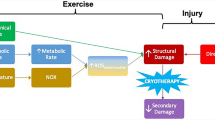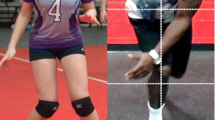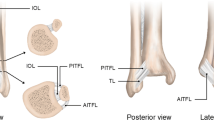Abstract
The aim of the study was to verify in an experimental model the effects of laser therapy performed with Ga-Al-As diode lasers (780 nm, 2500 mW) on traumatised muscles. Forty adult New Zealand male rabbits were divided into four groups (A, B, C and D) of ten animals each. Each group of animals was further divided into two subgroups of five animals each. The animals were submitted to muscular trauma for 7 min by clamping the posterior muscles of the left thigh under general anaesthesia. Four days later, the rabbits in the B1, B2, C1, C2, D1 and D2 subgroups started daily laser therapy. The parameters utilised were: 150 J/cm2 energy density, 3 W, 50 Hz in group B; 250 J/cm2, 3 W, 100 Hz in group C; and 800 J/cm2, 3 W, 0 Hz (continuous output) in group D. The animals in subgroups A1 and A2 were used as untreated controls and allowed to heal spontaneously. In order to prepare samples for histological, histochemical and histomorphometrical studies, dissection of the posterior muscle of the thigh was performed under general anaesthesia and before sacrifice, after five days of laser therapy in the subgroups B1, C1 and D1 and after ten days of laser therapy in subgroups B2, C2 and D2. The samples of untreated subgroups A1 and A2 were subjected to the same procedure and at the same times as the corresponding laser-treated groups. The following parameters were analysed on muscular samples: qualitative histological aspect (lactate dehydrogenase (LDH), cytochrome oxidase, acid phosphatase and alkaline phosphatase concentration with histoenzymatic methods) and quantitative histomorphometric evaluation of muscular damage and tissue repair. Blood samples were drawn from each subgroup before the trauma and again before sacrifice to measure the creatine phosphokinase (CK) and LDH levels. The results obtained in the tables are shown. Analysis of the results showed a better qualitative and quantitative healing process in traumatised muscles treated with Ga-Al-As diode laser therapy than in spontaneously healed ones. The results obtained with laser therapy were confirmed as haematic, histoenzymatic and histomorphometric values. According to these results, there is a positive relationship between the biostimulation properties of the laser and the healing of traumatised muscular tissue.
Similar content being viewed by others
Author information
Authors and Affiliations
Additional information
Received for publication 15 August 1997; accepted following revision 17 March 1998
Rights and permissions
About this article
Cite this article
Morrone, G., Guzzardella, G., Orienti, L. et al. Muscular Trauma Treated with a Ga-Al-As Diode Laser: In Vivo Experimental Study. Lasers Med Sci 13, 293–298 (1998). https://doi.org/10.1007/s101030050011
Published:
Issue Date:
DOI: https://doi.org/10.1007/s101030050011




